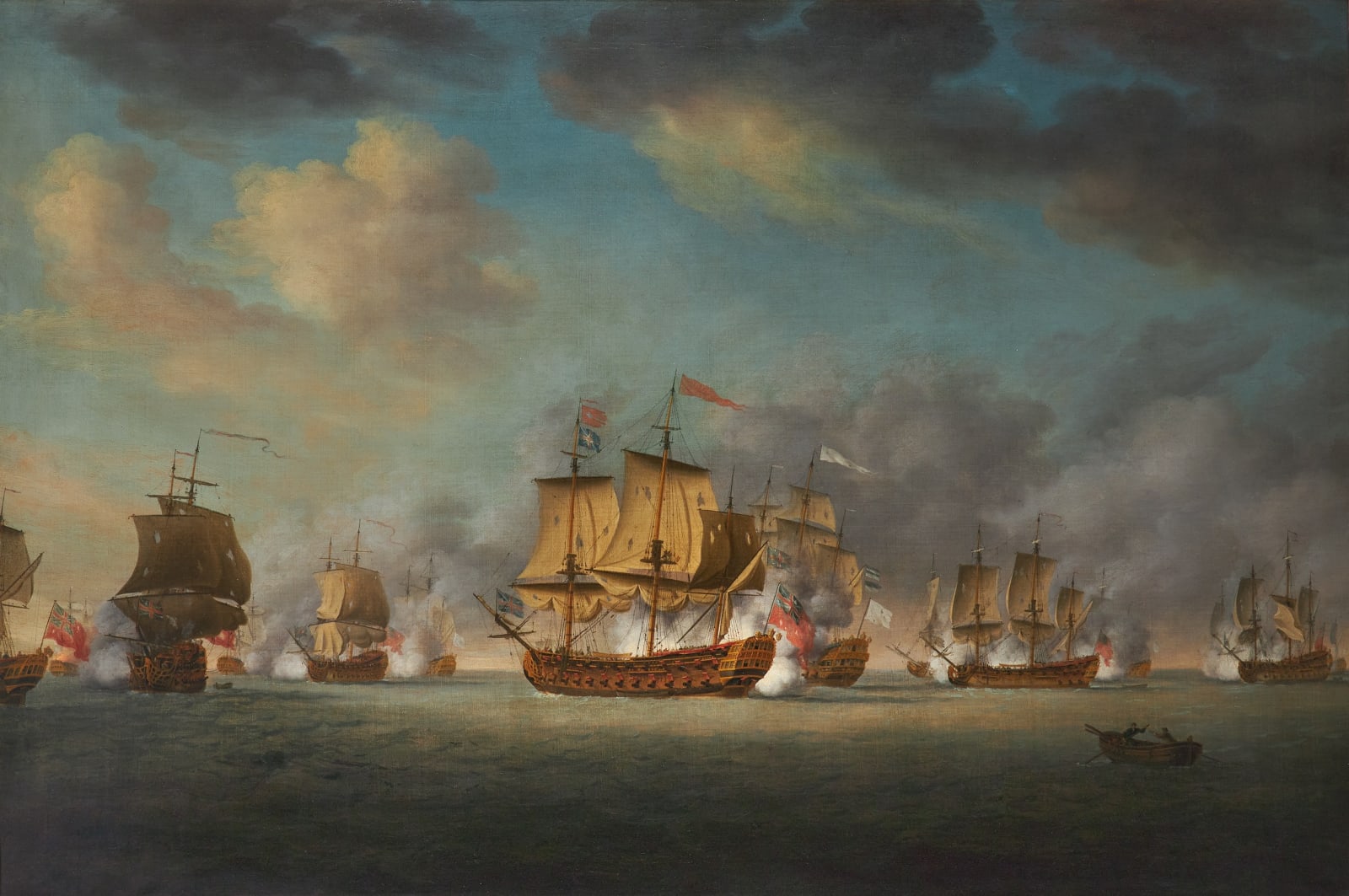Richard Paton British, 1717-1791
Provenance
with The Parker Gallery, London.
The raison d’être for the American War of Independence was to free the thirteen colonies skirting the Atlantic coast of North America from British colonial rule. As had happened a generation earlier however, during the Seven Years’ War (1756-63), the struggle soon widened into a much greater global battle between England and France, the latter having allied herself to the fledgling republic of the United States in the hope of making territorial gains at Britain’s expense. One of the main arenas for this world-wide conflict was India, and nowhere was there more activity than off the eastern coasts of the sub-continent and Ceylon.
The English and French naval forces in Indian waters were surprisingly well-matched and, commanded by Vice-Admiral Sir Edward Hughes and Admiral Pierre André de Suffren respectively, the two squadrons fought each other on no less than four occasions during the course of 1782. The first encounter, off Madras on 17 February, was bloody though indecisive, as were those on 12 April (off Providien, Ceylon) and 6 July (off Negapatam). The final action of the year, on 3 September, was fought off Trincomalee, Ceylon, and whilst Hughes was subsequently criticised for not pressing home his initial advantage, the battle was seen as a British success and Suffren was forced to run into Trincomalee to ride out the approaching monsoon.
Throughout these four encounters, Vice-Admiral Hughes flew his flag in the 74-gun Superb, a splendid 3rd rate built on the Thames at Deptford and launched in 1760. Mostly in action off the eastern seaboard of the United States in the latter stages of the Seven Years’ War (1761-63), she was then fitted out as a troop transport before being recommissioned as flagship to Sir Edward Hughes, C. in C. East Indies, in July 1778. Despatched to Indian waters in March 1779, she thereafter played a pivotal role in the naval activity there and fought in no less than seven furious encounters with the French in just two-and-a-half years (December 1780 – June 1783). By then barely seaworthy, she was ordered to Bombay for repairs and re-coppering that autumn, but “bilged and sank” in the Tellicherry Roads (Bombay) on 7 November 1783.
The battle off Providien on 12 April 1782 – coincidentally, the very same day as Admrial Rodney’s momentous victory over the French fleet at the battle of the Saintes in the West Indies – was the second duel between Admirals Hughes and Suffren as they fought for supremacy in the Indian Ocean during 1782-83. After their first encounter, Hughes had put into Madras to refit after which he embarked troops for the reinforcement of Trincomalee in Ceylon, only captured from the French earlier that year. Receiving intelligence that Hughes was making for Trincomalee, Suffren sailed from his base at Cuddalore and followed him south where both squadrons met off Providien. Initially, Hughes’s eleven ships were at a disadvantage as they were close inshore with little room to manoeuvre. Suffren concentrated his attack on the centre and a tremendous fight developed between his flagship Héros and Hughes’s Superb (seen in the foreground of this work). Eventually however, the two squadrons broke off the action, more the result of exhaustion rather than any sense of victory, and anchored for the night to ‘lick their wounds’. In the event, after remaining in sight of each other for over a week as both squadrons made repairs, the French withdrew to the north and Hughes continued south to Trincomalee where he finally arrived to disembark his troops and their stores on 22 April.
Despite the inconclusive nature of each of their bruising encounters, the advent of peace in 1783 nevertheless left England in overall control of the Eastern Seas and effectively ended French territorial ambitions in the region.
